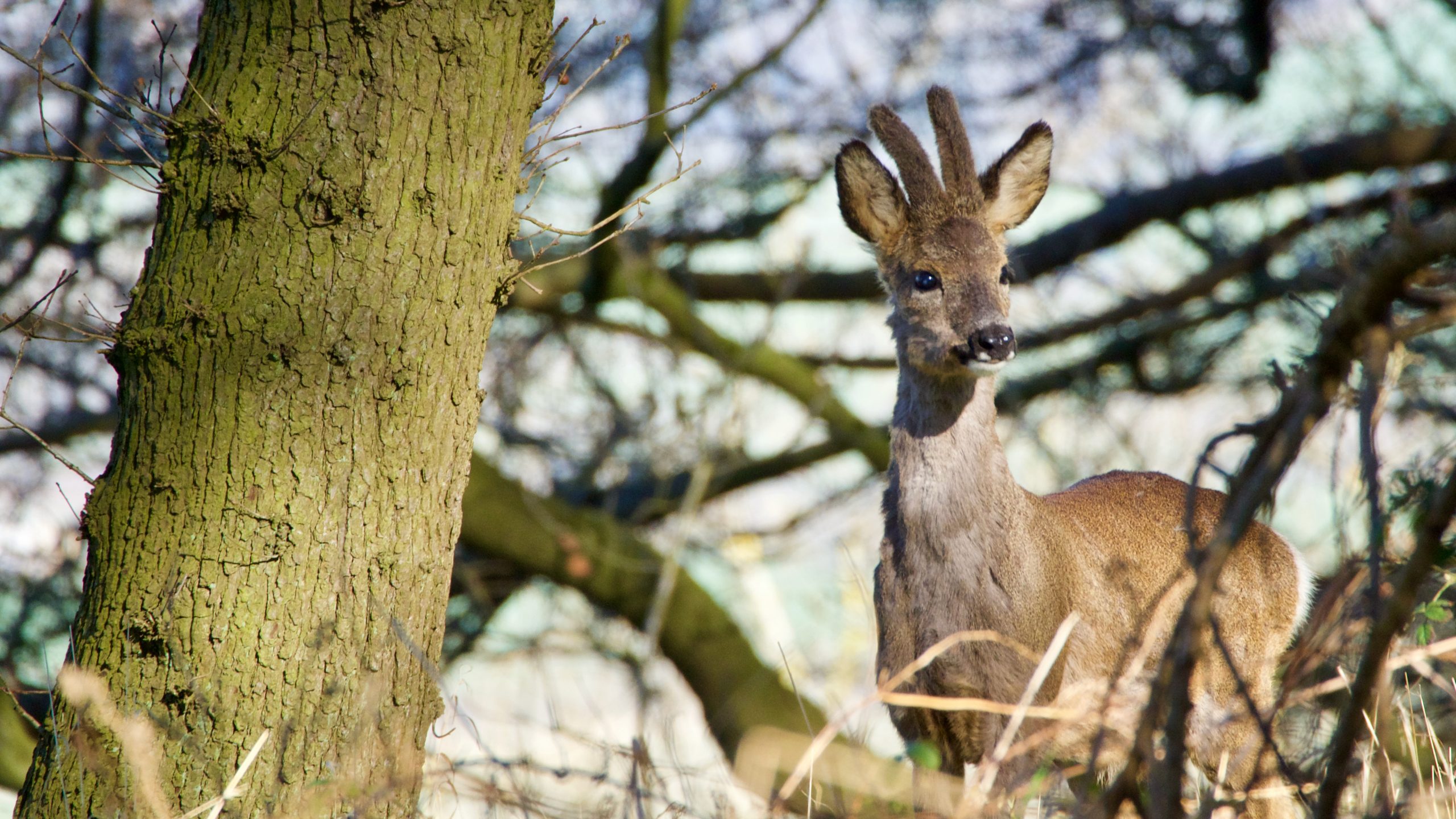I’ve had many close encounters with roe deer over the years. Many times have I disturbed them on my woodland runs and walks, just catching a glimpse as their bouncing white rumps quickly disappeared through the trees. Occasionally I’ve been lucky to get a closer look when the breeze has been in the right direction and they’ve been caught unaware of my presence.
If this roe buck was unaware of me, its mate wasn’t, but I managed to get a photo before they both disappeared down a slope that I would have needed abseil equipment.
Roe deer are simply delightful creatures with their lithe and athletic build and a coat that takes on russet hues during this time of the year. They are one of the truly indigenous deer species of the British Isles, alongside the red deer. Interestingly, records of their existence date back to the Mesolithic period — 6,000 to 10,000 years BC.
The population of roe deer in Britain a century ago was likely a mere fraction of what it is today, and in some regions, it may have been on the verge of extinction. The exploitation of our native woodlands by man over the centuries, along with the emergence of widespread sheep farming, destroyed the natural woodland habitats that roe deer require. Over-hunting further contributed to the decline of the roe population.
Thanks to an increase in woodland planting throughout the 20th century, combined with strategic reintroductions, roe deer populations have flourished to the point where culling is now being considered in some parts of the country1Hill, Chris. 2022. ‘Soaring Wild Deer Populations Hit “Highest Level for 1,000 Years”’, Eastern Daily Press (Eastern Daily Press) <https://www.edp24.co.uk/news/20676073.soaring-wild-deer-populations-hit-highest-level-1-000-years/> [accessed 4 April 2023]. As there are no natural predators to keep the population in check, it has become essential to maintain a balance between a sustainable, healthy population of roe deer and the needs of the environment2‘Roe Deer – the British Deer Society’. 2021. The British Deer Society <https://bds.org.uk/information-advice/about-deer/deer-species/roe-deer/?gclid=Cj0KCQjwla-hBhD7ARIsAM9tQKth8Ums7GvNftvb22HwlNMRoC11zl0zeuQWYKV2MyYGae92WBp7AgsaAgIPEALw_wcB> [accessed 4 April 2023].
Roe deer are frequently viewed as both beneficial and detrimental to the countryside. While their browsing habits can result in significant damage to young woodlands and crops, many landowners and rural industries commercially hunt roe deer, and the sale of venison serves as a substantial source of supplementary income.
Red deer, being naturally adapted to woodland environments, have been able to adjust to life in open hill areas. However, roe deer have faced greater difficulty in adapting to this new environment. Unlike red deer, roe are not social animals and tend to live in small family groups consisting of two or three does from previous years. As the young bucks mature, they are expelled from their father’s territory and must establish themselves independently.
While a herd of red deer on the hill is undoubtedly a majestic sight, I find the roe deer to possess a unique and charming quality. Perhaps it is because they are more elusive and delicate, or maybe it is due to their graceful movements. Often, all we catch sight of is the bobbing of their white rumps as they dart back into the safety of the woodland cover.
Roe deer are always alert, with their large ears constantly scanning for the sound of any approaching danger. Their nostrils are ever-sifting the air for any unfamiliar scents, and they possess a remarkable agility and skill in jumping — graceful and capricious.
- 1Hill, Chris. 2022. ‘Soaring Wild Deer Populations Hit “Highest Level for 1,000 Years”’, Eastern Daily Press (Eastern Daily Press) <https://www.edp24.co.uk/news/20676073.soaring-wild-deer-populations-hit-highest-level-1-000-years/> [accessed 4 April 2023]
- 2‘Roe Deer – the British Deer Society’. 2021. The British Deer Society <https://bds.org.uk/information-advice/about-deer/deer-species/roe-deer/?gclid=Cj0KCQjwla-hBhD7ARIsAM9tQKth8Ums7GvNftvb22HwlNMRoC11zl0zeuQWYKV2MyYGae92WBp7AgsaAgIPEALw_wcB> [accessed 4 April 2023]

Leave a Reply